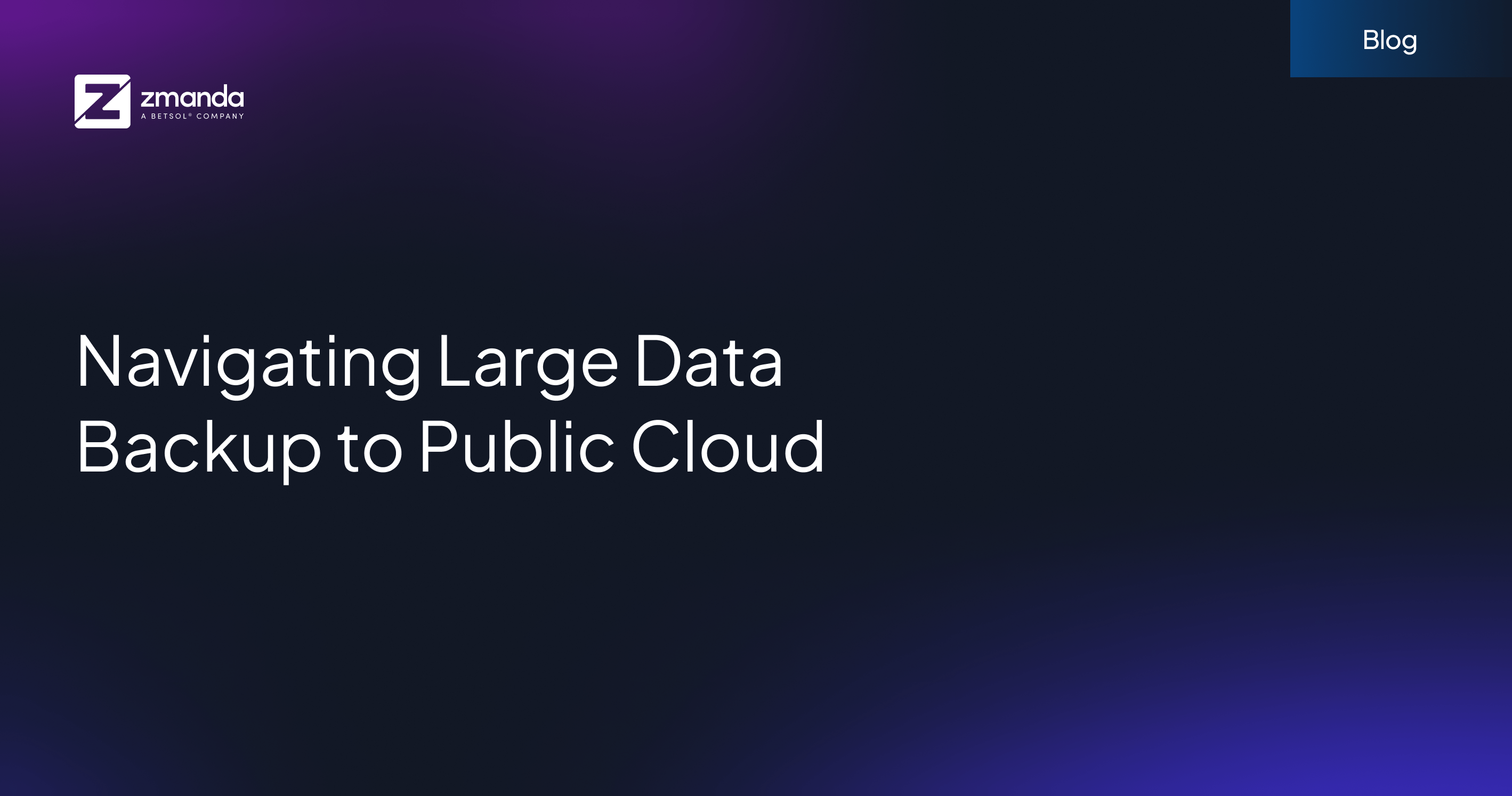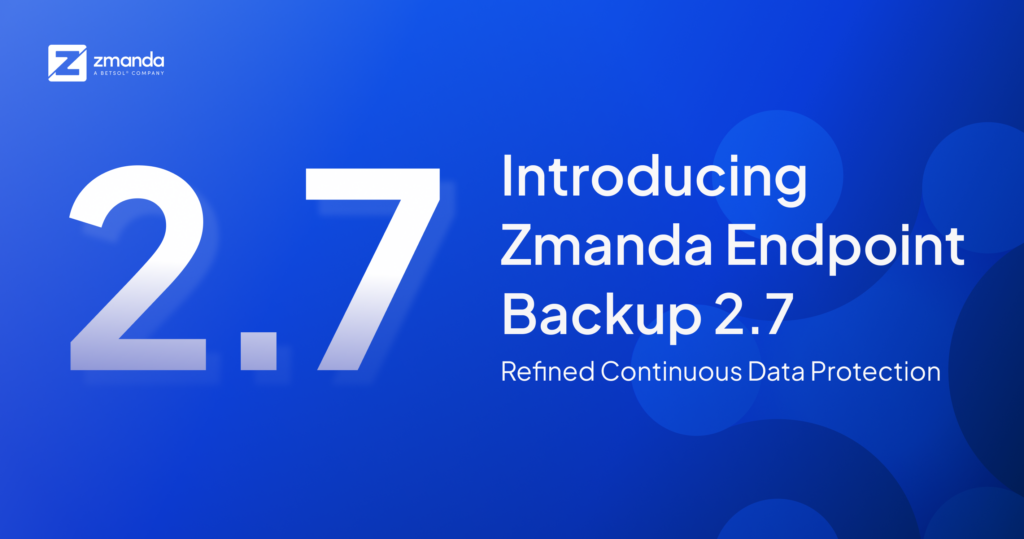
In the era of big data, storing and managing petabytes of data is the new norm. There is a need to efficiently backup large amounts of data for different reasons, including disaster recovery and compliance. Backing up to the cloud seems like the most effective solution for large data backups. Organizations can choose a cloud provider that offers data archival and cold storage solutions. It involves a delicate balance of navigating through challenges that include bandwidth limitations, data transfer times, security challenges, and the cost of implementation. However, navigating the vast expanse of the cloud for your organization’s critical data demands a strategic approach.
This article will explore the challenges organizations encounter with public cloud backups and provide practical strategies to improve the efficiency of their backup processes.
Key challenges in optimizing public cloud backup solutions:
1. Networking and Data Transfer Rate Challenges
Uploading terabytes of data over a standard internet connection can strain available bandwidth, affecting company operations if optimal network throughput and time settings are not determined. Bandwidth and data transfer rates directly impact the Recovery Time Objective (RTO) and Recovery Point Objective (RPO). Transferring large datasets out of the company network during peak work hours is discouraged as it consumes bandwidth, overloading the network.
Consider an enterprise with a 1 terabyte (TB) dataset. Exploring different network speeds and corresponding time requirements reveals a correlation. Management overhead is factored into these calculations.

Let’s explore scenarios:
Scenario 1:
Network Bandwidth: 100 Mbps
Time Taken: 30 hours
Scenario 2:
Network Bandwidth: 1 Gbps
Time Taken: 3 hours
Organizations typically possess 50–100 Mbps of bandwidth, making a 30-hour transfer rate problematic for the backup cycle. Network issues like intermittent connectivity or packet loss can introduce additional risks, potentially leading to incomplete backups, corrupt data transfers, or failed attempts, jeopardizing critical data integrity.
Egress Costs: The popularity of cloud storage introduces a downside: data egress. Egress, the process of retrieving data from the cloud, often incurs a ‘tax’ from providers, leading to increased costs during data restoration.
Keeping available network bandwidth and data transfer rates in mind, defining clear recovery requirements in the business’s Disaster Recovery Plan (DRP) is essential. A satisfactory RPO and RTO must align with business recovery needs, allowing recovery to reach the specified point in time without fail.
2. Balancing Retention, Cost, and Freedom in the Cloud
Businesses typically have specific data retention policies necessitated by regulatory compliance or business requirements; this requires regular backups. Data retention is the process of keeping data safe and available for a set period. Walking the tightrope between retaining data for legal or analytical purposes can be quite challenging.
Regular backups of large datasets due to retention policies cause the piling up of ‘dark data’ that is often unused. Predicting future storage needs accurately can be challenging, leading to under- or over-provisioning of cloud storage resources. With many storage solutions available in the public cloud domain, it’s essential to determine the best solution or try to adopt cloud neutrality. The backup strategy chosen must be such that it accurately predicts the storage costs, optimizes the data retention policies, and does not cause vendor lock-in issues.
3. Ensuring Data Durability in Businesses
Long-term data retention goals necessitate robust data backup and archival processes. Damaged backups leading to data corruption are common yet overlooked issues. Measures must be in place to identify and address damaged or failed backups, minimizing data loss and corruption risks.
Data corruption can result from various factors, like ransomware attacks and bit rot. Inconsistencies in data may also lead to loss and corruption. Public cloud providers offer data replication to ensure data durability and resilience, allowing applications to send data to multiple cloud-based services, mimicking traditional data replication but extending it to the cloud.
Data can be replicated through methods such as:
- Replication across data stores
- Replication across cloud regions
- Replication from local to cloud (or vice versa)
Cloud replication adds redundancy, contributing to high availability while avoiding vendor lock-in. Choosing where to store replicated copies plays a crucial role in the backup strategy.
4. Navigating Regulatory & Compliance Requirements
Meeting regulatory requirements for data storage and backup may pose challenges, especially when dealing with sensitive information. The backup schedule and strategies determined must adhere to certain guidelines. Compliance with standards often includes employing strategies such as data replication and encryption. It is essential when dealing with large volumes of data containing information crucial for business.
5. The Ransomware Dilemma
Ransomware, in data backups can be a considerable threat, putting the fate of an organization at formidable risk. The more significant challenge here is the fast adaptability of ransomware software to the latest technology, making its eradication a complex project. Employing methods to ensure your backed-up data is encrypted end-to-end and employing MFA to secure access to cloud storage play a key role.
What are the best practices for large data backup strategies?
Having a robust backup strategy plays a crucial role in overcoming the aforementioned challenges. It is important to be aware of the challenges an organization might face and equipped with the best practices to help them adopt the best strategy. Armed with the knowledge of potential challenges, organizations can navigate the digital landscape with confidence, adopting best practices to fortify their data defense and ensuring a steadfast foundation for future success.
Here are a few best practices to follow:
- Categorize data and analyze risk
- Determine the backup frequency
- Determine backup types
- Adopt a cloud backup strategy
- Improve capacity, availability, and performance
- Establish and document the backup process
To summarize, cloud data backup faces challenges like bandwidth constraints, transfer delays, and security issues. Organizations must address these by considering network limitations, data retention policies, durability, and security. A comprehensive backup strategy should involve categorizing data, specifying backup frequency and type, adopting a hybrid-cloud approach, and enhancing performance through deduplication and compression.
Zmanda handles all sorts of backups—full, incremental, and differential. It’s got scheduling for various recovery objectives. Also, it’s pretty efficient with data deduplication, cutting down on the data transfer and bandwidth needs, especially for big backups. Plus, it’s great for long-term data security with its archival and immutability features. Our enterprise backup solution unifies backup, disaster recovery, and long-term storage archiving, specifically tailored to clients’ needs. This provides security, reliability, scalability, and availability while recovering your environment, even in times of total server failure.
See it for yourself! Let’s get started with a free trial to strategize your data backup or request a demo. Got any questions? Please reach out to us here.


